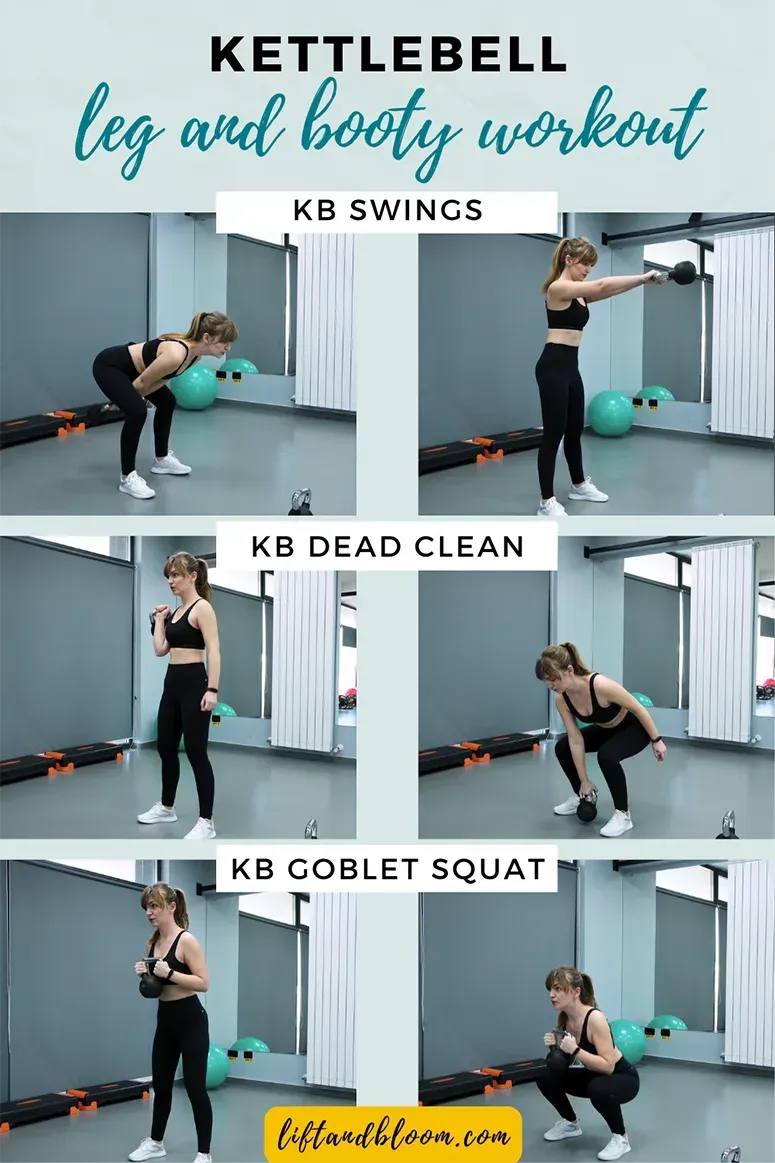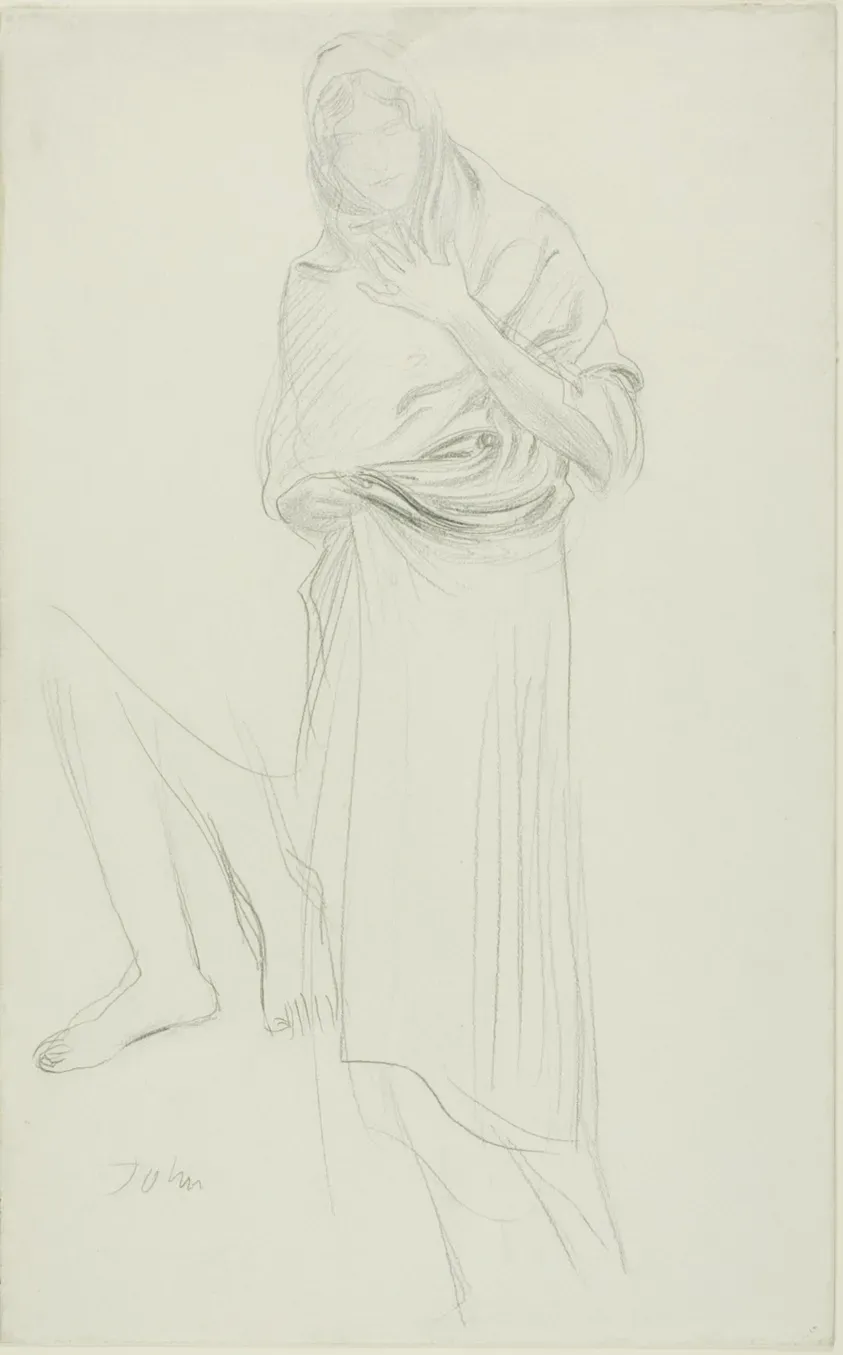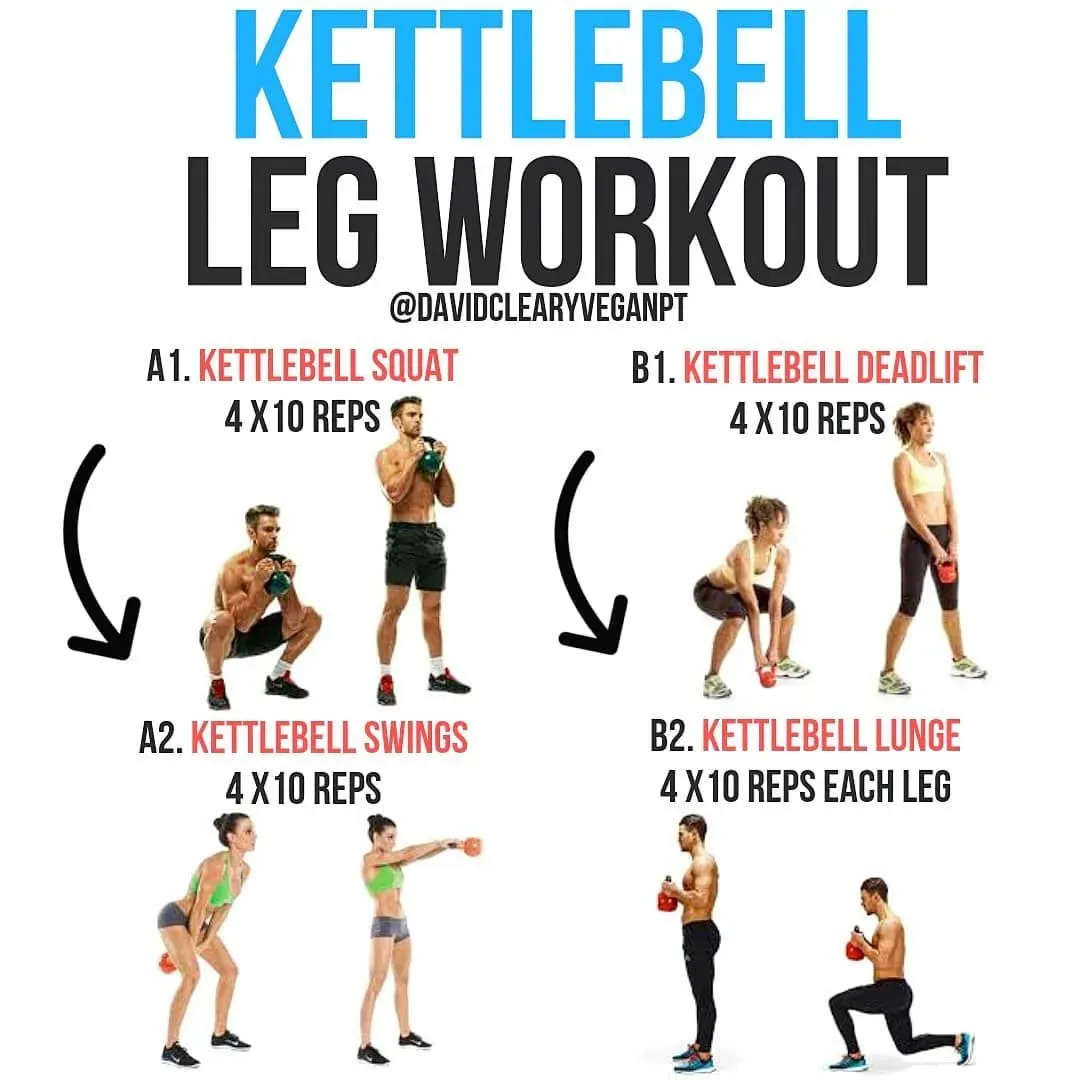Table of Contents
Let's be honest, leg day can feel like a chore. Squat racks are crowded, barbells feel heavy, and sometimes you just want something effective without all the fuss. Or maybe you've been hitting the same old routine and aren't seeing the progress you want. Building strong, functional legs isn't just about looking good; it's the foundation for pretty much everything you do, from picking up groceries to crushing your favorite sport.
Why Your Legs Need a Routine Kettlebell Workout

Why Your Legs Need a Routine Kettlebell Workout
Beyond the Barbell: Unique Kettlebell Leg Benefits
Alright, so you're thinking about hitting those legs, right? Maybe you're tired of the usual gym scene or just curious about what that cannonball with a handle can actually do for your lower half. Look, a routine kettlebell leg workout isn't just another way to squat or lunge. It brings something different to the table. Because of the kettlebell's off-center weight distribution, your muscles, especially those stabilizing ones deep in your hips and core, have to work way harder to control the movement. It's not just about lifting weight; it's about controlling it through space, which builds a kind of usable strength that translates directly into real-world movement.
Plus, the flow of kettlebell movements, like swings or cleans, ties your lower body into your entire kinetic chain. You're not just isolating muscles; you're teaching your body to work as one cohesive unit. Think about the power generated from your hips in a swing – that's pure, explosive leg and glute power that you just don't get the same way with traditional weights. It challenges your balance and coordination in a way that makes you feel more athletic, not just stronger in one plane of motion. That's why a routine kettlebell leg workout can feel surprisingly challenging even with lighter weights.
Functional Power and Injury Proofing
Let's talk about function. Our legs aren't just for lifting things straight up and down. They're for moving, jumping, changing direction, and supporting us through life's awkward moments. A routine kettlebell leg workout excels here because many of the exercises mimic natural human movements. Lunges, step-ups, and single-leg deadlifts with a kettlebell force each leg to work independently, highlighting and fixing imbalances that can lead to aches and pains down the road. Ever feel wobbly on one leg? Kettlebells will expose that pronto and help you build symmetrical strength.
Building strong hamstrings and glutes is also key for protecting your lower back. So many people have weak posterior chains from sitting too much. Kettlebell swings and deadlifts hit those muscles hard, helping to create a robust foundation that supports your spine and improves posture. Making a routine kettlebell leg workout a staple means you're not just getting stronger; you're building resilience and reducing your risk of common injuries. It's an investment in moving better, for longer.
- Improved core stability
- Enhanced hip power
- Better balance and coordination
- Reduced muscle imbalances
- Stronger posterior chain
- More athletic, functional strength
Essential Exercises for Your Routine Kettlebell Leg Workout

Essential Exercises for Your Routine Kettlebell Leg Workout
Swings and Deadlifts: The Non-Negotiables
Alright, let's get down to brass tacks. You want a solid routine kettlebell leg workout? You absolutely cannot skip the swing and the deadlift. These two are the bedrock. The kettlebell swing, done correctly, is a hip-hinge movement that torches your hamstrings, glutes, and even hits your core like a jackhammer. It's pure, explosive power coming from your posterior chain – the engine room of your lower body. You're not squatting it; you're *hiking* it and snapping those hips forward. It builds incredible power and teaches you how to generate force from the ground up.
Then there's the kettlebell deadlift. Whether it's conventional, sumo, or single-leg, the deadlift builds raw strength in your hamstrings, glutes, and back. It’s a fundamental human movement – picking heavy stuff up off the floor – and the kettlebell's shape makes it feel a bit different than a barbell. It forces you to brace hard and maintain a rigid spine. Mastering these two movements first means you're building a powerful, resilient foundation for everything else you'll do in your routine kettlebell leg workout.
Squats and Lunges: Lower Body Staples
Beyond the hinge, your routine kettlebell leg workout needs variations of squats and lunges. The kettlebell goblet squat is arguably one of the best squat variations out there, especially for learning proper depth and keeping an upright torso. Holding the weight at your chest acts as a counterbalance, letting you sit deeper without falling backward. It hits your quads, glutes, and demands core engagement.
Lunges, in their many forms (forward, reverse, lateral), are killer for building single-leg strength and fixing imbalances. Holding a kettlebell in one hand during a lunge, or even in the goblet position, ramps up the challenge significantly. Single-leg work is crucial because, let's face it, life isn't always about lifting symmetrically. Walking, running, climbing stairs – it's all single-leg action. Incorporating these variations into your routine kettlebell leg workout ensures you're building balanced, functional strength.
Exercise | Primary Muscles | Why It's Essential |
|---|---|---|
Kettlebell Swing | Hamstrings, Glutes, Hips, Core | Explosive power, posterior chain strength |
Kettlebell Deadlift | Hamstrings, Glutes, Lower Back | Foundation of strength, hip hinge pattern |
Goblet Squat | Quads, Glutes, Core | Learn proper squat mechanics, balanced strength |
Kettlebell Lunge (various) | Quads, Hamstrings, Glutes, Stabilizers | Single-leg strength, address imbalances |
Building Your Weekly Routine Kettlebell Leg Workout Plan

Building Your Weekly Routine Kettlebell Leg Workout Plan
Finding Your Frequency and Focus
you've got the essential moves down. Now, how do you actually build a *routine* kettlebell leg workout that sticks and gets results? First off, figure out how often you can realistically commit. For most people, hitting legs hard 2-3 times a week is plenty, assuming you're recovering properly. You could do two full-body kettlebell sessions that include leg work, or dedicate one or two days specifically to lower body. Listen to your body; if your quads are screaming from Monday's session, maybe Wednesday isn't the day for max effort deadlifts.
Consider splitting your focus slightly across the week. Maybe one day is more hip-hinge dominant (swings, deadlifts) and the other is more squat/lunge dominant. Or perhaps one day is heavy and lower rep, while the other is lighter and higher rep for conditioning. The goal is consistency over complexity. Don't try to cram every single exercise into one session. Pick 3-5 key movements and focus on quality over quantity. That's how you build a sustainable routine kettlebell leg workout.
Selecting Exercises and Progressing Smartly
Once you've got your frequency, pick your battles. For a typical routine kettlebell leg workout session, you'll want a hinge movement (like swings or deadlifts), a squat variation (goblet squat, double kettlebell front squat), and maybe a lunge or single-leg exercise (reverse lunge, single-leg deadlift). Don't be afraid to mix and match week to week to keep things fresh and challenge your muscles in new ways.
Progression is where the magic happens. You can't just do the same workout with the same weight forever and expect results. How do you make your routine kettlebell leg workout harder? Increase the weight, obviously. But if you're limited by kettlebell sizes, increase the reps, do more sets, shorten rest times, or try a more challenging variation of the exercise (e.g., from goblet squat to double kettlebell front squat). Small, consistent increases over time lead to big gains.
- Increase weight when form allows.
- Add reps or sets to your current exercises.
- Decrease rest periods between sets.
- Try a more difficult exercise variation.
- Focus on eccentric (lowering) phase control.
- Incorporate pauses at the bottom of squats or lunges.
Warming Up, Cooling Down, and Listening In
Before you even think about grabbing a kettlebell for your routine leg workout, spend 5-10 minutes warming up. This isn't optional. Dynamic movements like leg swings, hip circles, bodyweight squats, and maybe some light swings prepare your joints and muscles for action. A proper warm-up reduces injury risk and simply makes the workout feel better.
After you've crushed your session, a brief cool-down helps signal to your body that it's time to recover. A few static stretches for your quads, hamstrings, and glutes can feel great, though the science on static stretching right after a workout is a bit mixed. More importantly, pay attention to how your body feels. Soreness is normal, but sharp pain isn't. If something consistently hurts, back off and figure out why. Maybe your form needs tweaking, or perhaps you need an extra rest day. Consistency in your routine kettlebell leg workout requires smart training and listening to the signals your body sends.
Troubleshooting Common Routine Kettlebell Leg Workout Issues

Troubleshooting Common Routine Kettlebell Leg Workout Issues
Addressing Form Flaws and Setbacks
so you've built your routine kettlebell leg workout, you're showing up, and things are mostly clicking. But let's be real, it's not always smooth sailing. Maybe your lower back is complaining after swings, your knees feel a bit iffy during squats, or you just feel stuck and aren't getting stronger. First step? Don't panic and don't just push through sharp pain – that's your body waving a red flag, not a white one. Often, these issues boil down to form. That nagging lower back pain in a swing? Probably hinging from your back, not your hips. Knees tracking inward on a squat? Could be weak glutes or poor ankle mobility. Plateaus? You're likely not progressing the exercises effectively or recovering enough. These are common hurdles, not roadblocks, and usually require a bit of self-correction or getting a qualified eye on your movement.
Making Your Kettlebell Leg Workouts Stick
So, there you have it. A routine kettlebell leg workout isn't some fitness fad; it's a potent tool for building a lower body that's strong, stable, and ready for whatever life throws at you. We've covered the core movements, the importance of hitting both the front and back of your legs, and how to structure a week that actually works. Consistency, as with anything worthwhile, is the real secret sauce here. Don't expect miracles overnight, but stick with it, focus on your form over chasing heavy weight immediately, and pay attention to what your body is telling you. A little effort with that cannonball of iron can go a long way in forging legs that not only look the part but perform when it counts. Now, go put in the work.